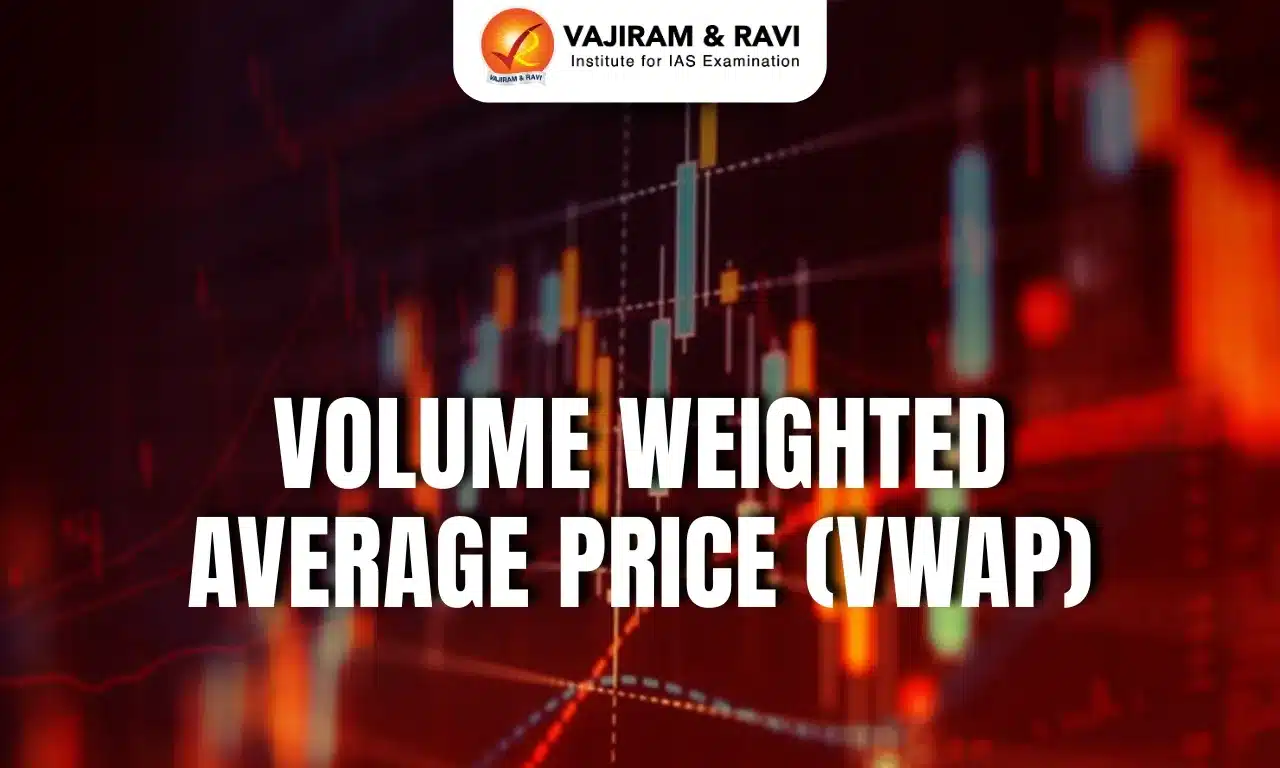Volume Weighted Average Price Latest News
To make trading easier for institutional investors and market participants, SEBI recently made it mandatory to issue a Common Contract Note with a single volume weighted average price.
About Volume Weighted Average Price
- The Volume Weighted Average Price (VWAP) is, as the name suggests, is the average price of a stock weighted by the total trading volume.
- The VWAP is used to calculate the average price of a stock over a period of time.
- It helps compare the current price of the stock to a benchmark, making it easier for investors to decide when to enter and exit the market.
- Also, the VWAP can assist investors in determining their approach towards a stock (active or passive) and make the right trade at the right time.
How to Calculate Volume Weighted Average Price ?
- The VWAP is calculated for each day.
- It starts when the markets open and ends when the markets close for the day. Since it is done every day, the calculation uses intraday data.
- The formula for calculating VWAP is as follows:
- VWAP = Typical Price*Volume / Cumulative Volume
- Here, the numerator indicates the total value of all the trades for any specific period, and the denominator indicates the total trading volume for the same duration.
- The typical price is the average of the high price, the low price, and the closing price of the stock for that day.
- The VWAP ratio is then presented on a chart as a line.
- It has been likened to a moving average, in that when the price is above the VWAP line, the market is seen as in an uptrend, and when the price is below the VWAP, the market is in a downtrend.
Pros of Volume Weighted Average Price
- VWAP ratios are used in algorithmic trading to help traders and investors to determine the best price at which to buy or sell, in line with the volume of the market.
- By ensuring high liquidity, traders can usually expect lower transaction costs and best execution.
- VWAP is particularly useful when trading large numbers of shares. Attempting to buy a large volume of a single stock on the market could artificially increase its price — by using VWAP, traders can ensure that they aren’t overinflating the trading volume for the asset they want to buy.
Cons of Volume Weighted Average Price
- Most of the problems stem from the fact that a VWAP is a culminative indicator, meaning it relies on a vast amount of data points that will only increase in quantity throughout the day.
- Having such a large data set can cause lags in the VWAP line, in a similar way to moving average lags, which is why most traders and investors only use one-minute and five-minute timeframes.
Source: NDTV
Last updated on January, 2026
→ Check out the latest UPSC Syllabus 2026 here.
→ Join Vajiram & Ravi’s Interview Guidance Programme for expert help to crack your final UPSC stage.
→ UPSC Mains Result 2025 is now out.
→ UPSC Notification 2026 is scheduled to be released on January 14, 2026.
→ UPSC Calendar 2026 is released on 15th May, 2025.
→ UPSC Prelims 2026 will be conducted on 24th May, 2026 & UPSC Mains 2026 will be conducted on 21st August 2026.
→ The UPSC Selection Process is of 3 stages-Prelims, Mains and Interview.
→ UPSC Result 2024 is released with latest UPSC Marksheet 2024. Check Now!
→ UPSC Toppers List 2024 is released now. Shakti Dubey is UPSC AIR 1 2024 Topper.
→ Also check Best IAS Coaching in Delhi
Volume Weighted Average Price FAQs
Q1. What type of data is used to calculate Volume Weighted Average Price (VWAP)?+
Q2. What is the formula for calculating Volume Weighted Average Price (VWAP)?+
Q3. When the stock price is above the VWAP line, it is generally interpreted as:+
Q4. What is a major limitation of VWAP?+
Q5. VWAP is most commonly used in which kind of trading?+
Tags: prelims pointers upsc current affairs upsc prelims current affairs volume weighted average price

















